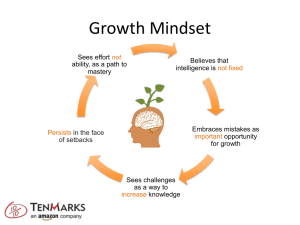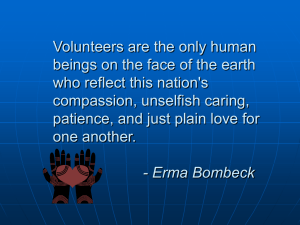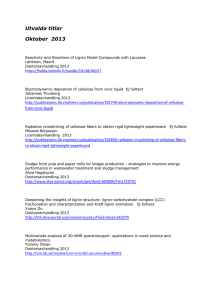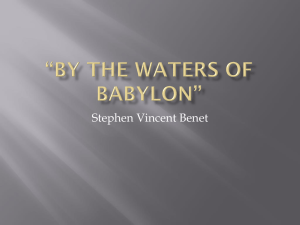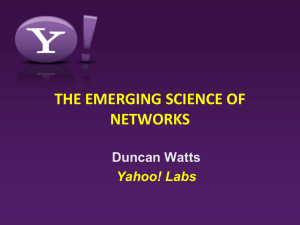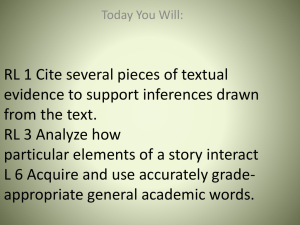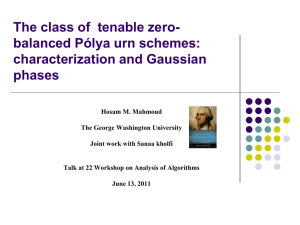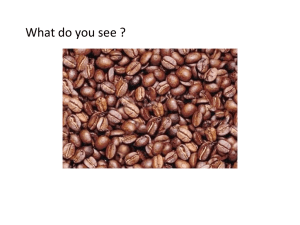Information Cascades
advertisement
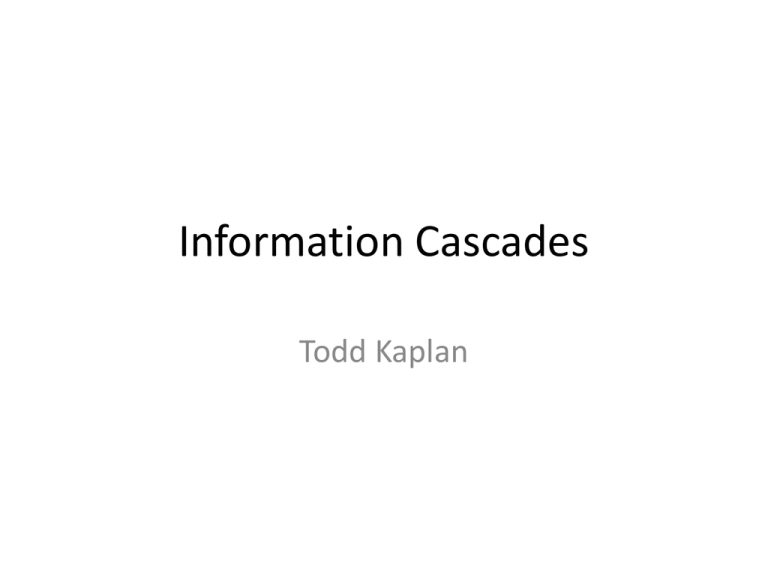
Information Cascades Todd Kaplan Restaurant • You go to a unfamiliar city such as Tel Aviv. • Where do you decide to eat? – Restaurant A and B both look nice on the outside and have a similar menu. – A has a small crowd. – B is empty. – Which do you go to? • Is this still the case when from the outside B looks slightly better? • How about if some clerk at the hotel said he heard B was good? Dance. • You are at a dance. • Some good-looking guy asks the woman next to you to dance. She says no. • He then asks another woman next to you to dance. She says no. • Now he asks you to dance. You say … • Some not-so-good-looking middle-aged guy asks you to dance first. You say … Job Interview • Haifa wants to hire an economist. • Sam has a boring CV but we hear that he is interviewing at Bar-Ilan and BGU. • We decide we must have missed something and give him a job talk. • The talk is somewhat lame, but he is in a good field. We hear that Bar-Ilan and BGU made him and offer. In addition Tel Aviv is interviewing him. • We decide to make Sam an offer. Don’t look up. • In the 60s, some experimenters had groups of people 1-15 look up in the sky. • They then watched to see if anyone else looked up as well. • With one looking up, most ignored him. • With 5 looking up, many stopped. • With 15, 45% stopped and kept looking up. Information cascade • In all these cases, decisions are made sequentially. • People deciding later can infer information of those deciding earlier. • A cascade develops when people deciding later ignore their information relying on the earlier information. Information vs. Network. • This relates to network externalities. • Is a bestselling book pick up momentum because: – People like to read the same book. – If so many people read a book it must be good. Experiment • • • • Two urns: B and R. B contains 2 blue balls and 1 red ball. R contains 2 red balls and 1 blue ball. Person 1 privately sees one randomly drawn ball. He guesses which urn. • Person 2 privately sees one randomly drawn ball AND what person 1 guessed. She guesses which urn. • Etc.. What should happen. • If person 1 sees R what does he choose? • If person 1 sees B what does he choose? • If person 2 sees 1 choose R and sees R what does she choose? • If person 2 sees 1 choose R and sees B what does she choose? • If person 3 sees 1 choose R and 2 choose R and sees B what does she choose? • Does this ever stop? Bayes’ Rule • P(A|B)=P(A & B)/P(B)=P(A)*P(B|A)/P(B). • What is the prob of the urn being B given sequence B? • What is the prob of the urn being B given sequence BB? • What is the prob of the urn being R given sequence BB? • What is the prob of the urn being B given BBR? • What is the prob of the urn being B given BRBBR? Breaking a Cascade • What do you do if you see the following sequence: • BBBBBBBBBBBBBBBBBRR and then get an R. Information Cascade An information cascade starts if there is too much variance from the average. Lessons • It is rational to look at the decisions of others. • Cascades can be wrong. – Opposite of the Wisdom of Crowds effect. • Cascades can be based on very little information. • Cascades can be fragile. • Financial crisis.. Could causes have been an information cascade? People ignore common sense because everyone else does.
